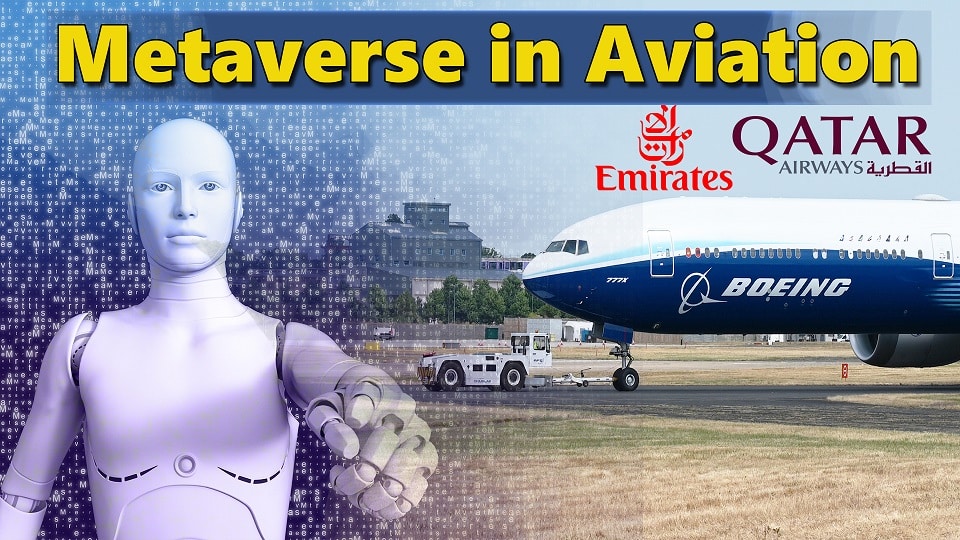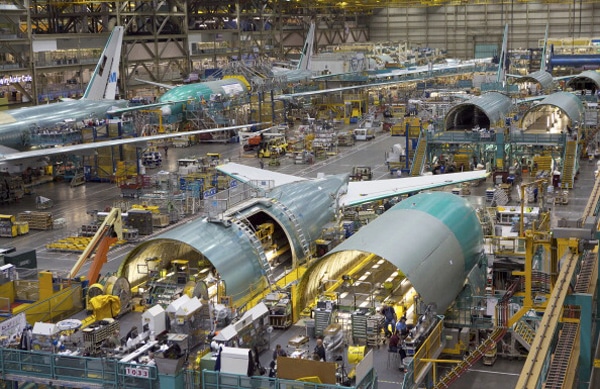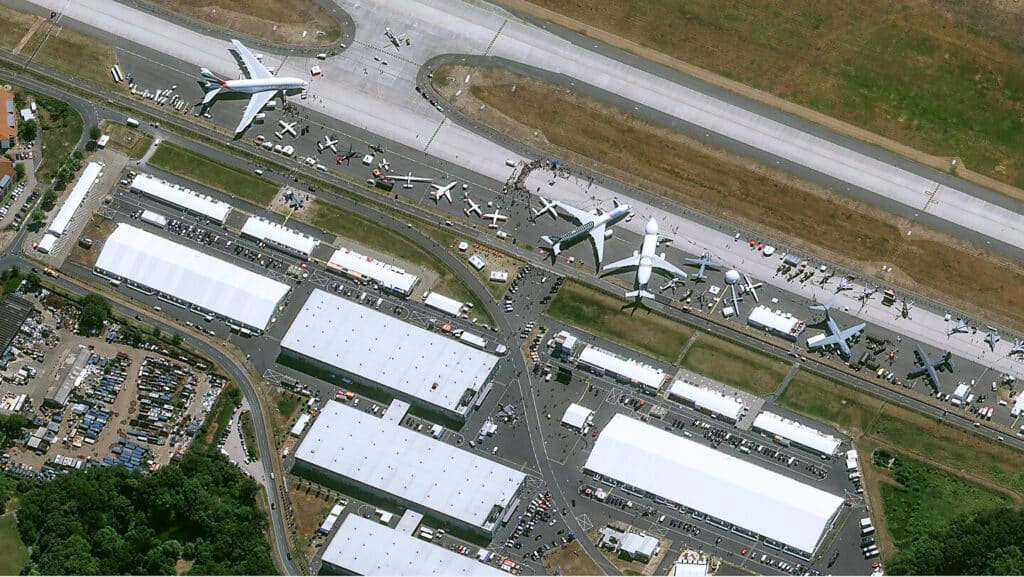Aerospace
How can Metaverse transform the aviation industry? Explained
The majority of aviation firms are concentrating on Metaverse. There will be significant changes in the aviation business.

It is the technology of the future for 3D virtual worlds and Internet applications. The term metaverse first appeared in the science fiction book Snow Crash in 1992 as a combination of the words meta and universe. It is the kind of technology that links the virtual and real worlds through the use of headsets for virtual and augmented reality. This is frequently utilized in a variety of applications, including those in the gaming sector, training services, the medical field, engineering, and many more.
The Metaverse is now Mark Zuckerberg’s most anticipated project, yet due to the application’s lack of popularity, it has received a lot of criticism. However, the metaverse might bring about a fresh revolution in the training sector. The majority of businesses have begun looking for ways to use metaverse channels to develop their staff members’ abilities in the virtual reality environment.
Emirates Will Train Thousands of New Cabin Crew in the Metaverse(Opens in a new browser tab)
What Is the Metaverse, Exactly? How does it function?
The metaverse can be compared to the internet in a virtual 3D space in its most basic form. The metaverse resembles a Zoom conference that has been amplified in a way that participants feel as though they are in the same place for the majority of the training exercises. Participants get a sense of the actual environment thanks to the game’s own virtual universe. Users can also manipulate the tools virtually and engage with them in this way.
It is a new milestone in innovation since it offers some benefits over quickly gaining knowledge of specifics and comprehending aspects that are schematically described. The Metaverse’s results include the ability to organise meetings, play games, provide technical training, and use it for induction programmes, among many other things.
Why the aviation industry will benefit from the metaverse.
The majority of businesses are constantly concerned with their staff members’ ongoing skill development, yet some of the most knowledgeable workers may not always be nearby such a training centre. Therefore, Metaverse can bridge network gaps and provide virtual reality training for such trainees, which will be helpful for any employees of organisations sitting wherever in the world.
These are the 8 benefits of being an Emirates Pilot.(Opens in a new browser tab)
Because of the staff’s limited availability and high demand, several airlines have a tough time keeping them on standby, and paying their salaries could cause them severe financial difficulties. This issue can be resolved by Metaverse by offering pre-intern applicants training whenever a need arises. Airlines can then recruit them, swiftly instruct them on their duties, and then induct them into the workforce.

EVERETT, WASHINGTON – JUNE 13: Employees work on the Boeing 777 assembly line June 13, 2012, at the Boeing Factory in Everett, Washington. (Photo by Stephen Brashear/Getty Images)
Who will be the first to use Metaverse?
Airlines must be technologically advanced since they are competing for market share and profit. Emirates and Qatar Airways have disclosed their intentions to introduce NFTs and join the Metaverse. The metaverse is a market that Singapore Airlines, Lufthansa, Qatar Airways, and Qantas are all attempting to break into. Imagine how beneficial it would be for customers to check and reserve seats on aeroplanes using the metaverse.
[the_ad id=”17216″]
Airlines have therefore turned to the metaverse to give their customers the same flying experience online. Through Metaverse, Qatar Airways has made it possible for travellers to see the cabin from the comfort of their own homes. Additionally, the airline has hired the first Meta-human cabin crew. As they may be utilised for ticketing and trip tracking in the airline industry, NFTs are being used to enhance already-existing loyalty flight programmes. Information like flight time, distance travelled, etc. can also be stored by NFTs.
Can the Metaverse be used to help us manufacture aircraft?
Boeing is considering it. The struggling aircraft manufacturer hopes to improve its design process by doing this in the metaverse. Of course, it’s not entirely apparent what it involves.
Future aircraft manufactured by the Boeing Company will include robots that can communicate with one another and run 3-D technical blueprints. Microsoft headsets, which offer a mixed reality experience, will connect mechanics from all over the world at the same time.
The goal of Boeing’s strategy is to integrate design, manufacturing, and airline services functions into a single digital manufacturing system. The corporation says it will be implemented over the next two years.
The “Metaverse and the Future of Flight” crowdsourcing challenge were started by Airbus. The competition looks for creative ideas to reinvent and improve the traveller experience from departure to destination using the metaverse.
How the metaverse can benefit the medical field
virtual medical centre It consists of a virtual reality hospital setting, where first treatments will concentrate on physiotherapy services
It is anticipated that the metaverse will be a useful tool for performing challenging surgical procedures and improving patient care. Complex surgeries will soon incorporate augmented reality (AR), just as surgical procedures presently use robotics. Also, for effective diagnosis, use technology like smart glasses.
[the_ad id=”17216″]
How Metaverse may significantly reduce the cost of training
Materials are one of the direct expenses related to in-person training. Learners can make mistakes in the metaverse without using up physical resources. This encourages effortless learning and conserves resources. Training in the metaverse is used to develop soft skills as well as technical skills. Important qualities like communication, teamwork, customer service, and people-facing abilities are fostered through metaverse avatars. The metaverse platform enables students to get practical experience that speeds up and improves efficiency in their learning.
Prerecorded sessions can be used with this material, which has the potential to be important for the application’s use. The best of its quality training personnel can be served by the metaverse without much use of human involvement.

Aerospace
Boeing Transfers Rocket Stage to NASA, Paving Way for Human Moon Mission

Boeing has achieved a significant milestone by providing NASA with the second core stage of the Space Launch System (SLS) rocket.
This crucial component, crafted at NASA’s Michoud Assembly Facility (MAF), is set to propel the Artemis II crew into lunar orbit, marking humanity’s return to deep space after a 50-year hiatus.
The monumental Boeing-built rocket stage, the largest element of the Artemis II mission, will embark on a journey aboard the Pegasus barge, traveling 900 miles to NASA’s Kennedy Space Center.
Comparison of two legendary aircraft B777x vs B747 aircraft:Click here
Upon arrival, it will be meticulously integrated with other essential Artemis II components, including the upper stage, solid rocket boosters, and NASA’s Orion spacecraft within the iconic Vehicle Assembly Building. This intricate integration process is a vital step toward the eagerly anticipated Artemis II launch, slated for 2025.
“Boeing-built products helped land humankind on the moon in 1969, and we’re proud to continue that legacy through the Artemis generation,” remarked Dave Dutcher, vice president and program manager for Boeing’s SLS program. “Together, with NASA and our industry partners and suppliers, we are building the world’s most capable rocket and paving the way to deep space through America’s rocket factory in New Orleans.”
NASA, Lockheed Martin Reveal X-59 Quiet Supersonic Aircraft:Click here
The delivery of Core Stage 2 marks a significant achievement in the evolution of the SLS rocket. Towering over 200 feet and powered by four RS-25 engines, this core stage, coupled with two solid-fueled booster rockets, will generate a staggering 8.8 million pounds of thrust. This immense power is crucial to launching Artemis II and future missions into the vast expanse of space.
The SLS rocket stands unparalleled in its capability to transport both crew and substantial cargo to the moon and beyond in a single launch. Its extraordinary capacity will facilitate the delivery of human-rated spacecraft, habitats, and scientific missions to destinations including the moon and Mars, ushering in a new era of space exploration.
-

 Travel1 week ago
Travel1 week agoAir India to Expand US Operations with Three New Routes After a Decade
-

 Travel2 weeks ago
Travel2 weeks agoWhy We Should Avoid These Stamps in a Passport
-

 Airlines1 month ago
Airlines1 month agoInvestigations Reveal Fake Chinese Titanium in Boeing and Airbus Jets
-

 Tech4 weeks ago
Tech4 weeks agoChina’s CATL Plans 1,800-Mile Electric Plane Launch by 2027
-

 Airport3 days ago
Airport3 days agoTop 10 Largest Airports in the World by Size
-

 Aerospace4 weeks ago
Aerospace4 weeks agoChina’s Fighter Jets Turn Wings into Autonomous Drones
-

 Airlines4 days ago
Airlines4 days agoAir India Rolls Out A350s for Delhi-New York JFK and Newark Routes
-

 Defence3 weeks ago
Defence3 weeks agoBoeing Enhances Chinook with New Engines and Block II Upgrades at $96 Million








